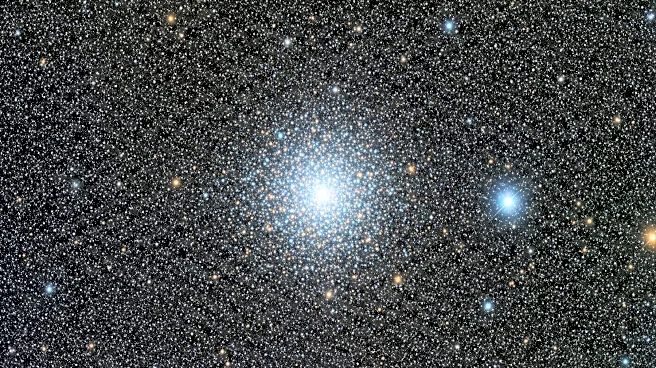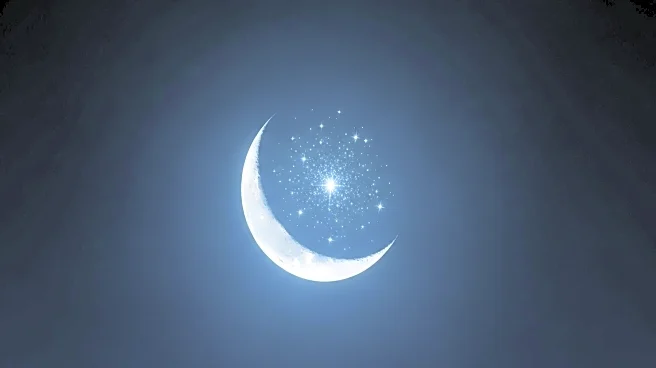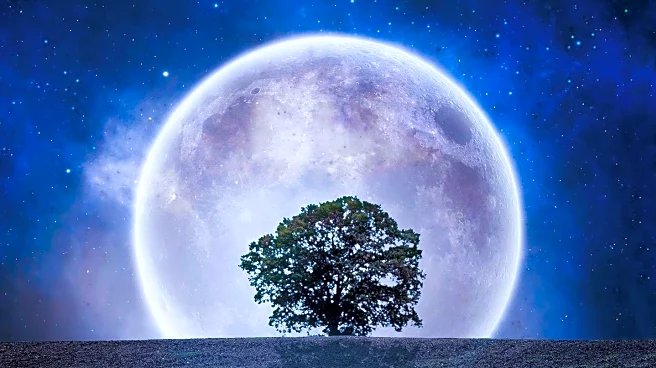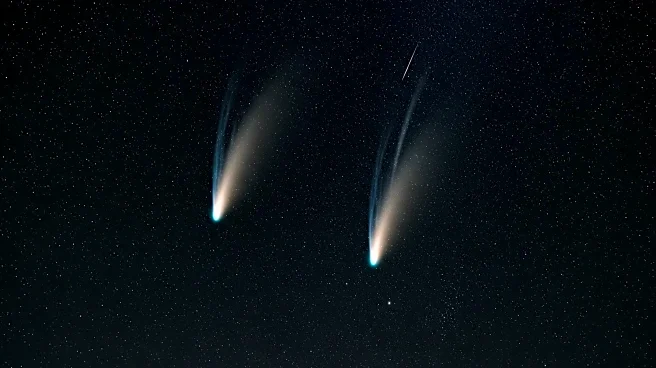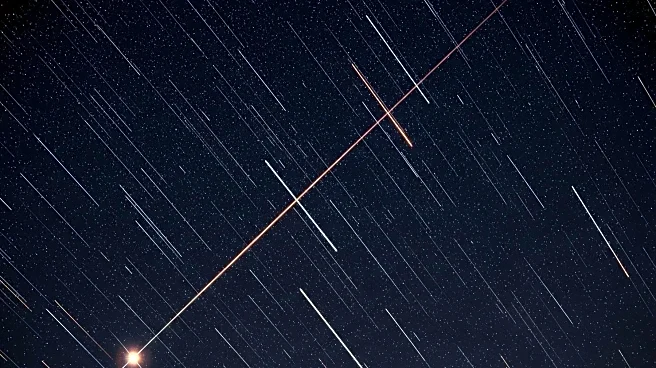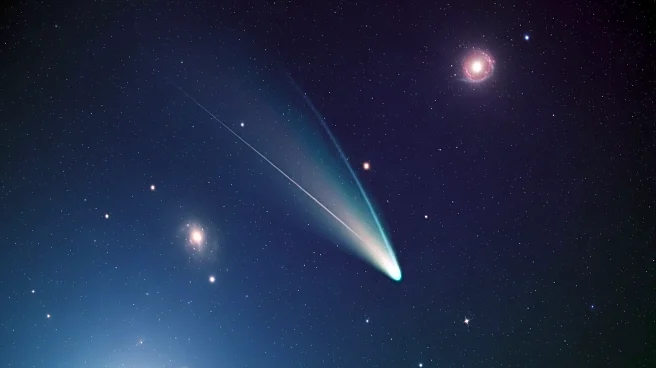What's Happening?
Astronomy enthusiasts are encouraged to observe the M22 globular cluster tonight, which is one of the closest such clusters to Earth. Located near the lid of Sagittarius' Teapot, M22 shines brightly at a magnitude of 5.1, making it visible even with the Full Moon in the sky. The cluster is situated approximately 2.5 degrees northeast of Lambda Sagittarii, and its photographic size is comparable to the Full Moon, although visually it appears smaller. M22 contains at least 70,000 stars and is positioned just 10,000 light-years from Earth, enhancing its brightness in the night sky. Observers can use binoculars or telescopes of any size to view this celestial event, with lower powers ideal for a broader view and higher powers suitable for exploring its dense star-packed center.
Why It's Important?
The visibility of M22 offers a unique opportunity for both amateur and professional astronomers to study one of the closest globular clusters to Earth. This event highlights the accessibility of astronomical phenomena to the public, fostering interest and education in the field of astronomy. Observing such clusters can provide insights into the formation and evolution of stars, contributing to scientific understanding of the universe. Additionally, events like these can stimulate public interest in space exploration and science, potentially inspiring future generations to pursue careers in STEM fields.
What's Next?
As the Full Moon continues to illuminate the night sky, astronomers and enthusiasts may plan further observations of M22 and other celestial objects. The ongoing visibility of M22 could lead to more detailed studies and potentially new discoveries about its composition and behavior. Astronomy clubs and educational institutions might organize viewing events to engage the community and promote scientific literacy. Future sky events will continue to be monitored and shared with the public, encouraging ongoing participation in astronomical observations.
Beyond the Headlines
Observing M22 not only provides a chance to appreciate the beauty of the night sky but also raises awareness about the importance of preserving dark skies. Light pollution is a growing concern that affects the ability to view celestial objects, and events like these can highlight the need for conservation efforts. Additionally, the study of globular clusters like M22 can contribute to understanding the dynamics of our galaxy and the role of such clusters in its structure and evolution.

